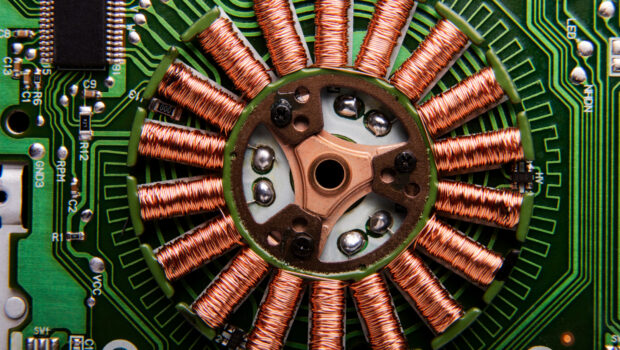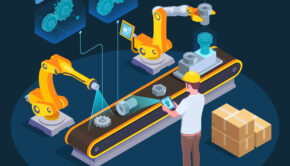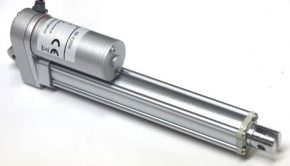The Evolution of Servo Drives: Transforming Motion Control Over Three Decades
The last three decades have witnessed a remarkable evolution in servo drive technology, reflecting broader trends in automation, computing, and electronics. Servo drives, essential components in precision motion control systems, have undergone significant changes in design, functionality, and application scope. These advancements have not only enhanced their performance and reliability but also expanded their usability across various industries, from manufacturing and robotics to aerospace and entertainment. This article delves into the key developments in servo drive technology over the past 30 years, illustrating how these changes have shaped modern industrial practices and paved the way for future innovations.
The Early 1990s: The Foundation
In the early 1990s, servo drives were primarily analog systems. These drives were effective for basic applications but limited by the technology of the time, which relied heavily on manual tuning and calibration. Adjustments were often done through trial and error, requiring significant expertise and time. Additionally, these analog systems lacked the capability to store or process large amounts of data, limiting their efficiency and adaptability.
The Late 1990s and Early 2000s: The Digital Shift
The late 1990s marked the beginning of the digital revolution in servo drive technology. The introduction of digital signal processing (DSP) chips was a game-changer, enabling more precise control and better performance. Digital servo drives could handle complex algorithms to control speed, position, and torque more accurately than their analog predecessors. This period also saw the integration of feedback systems that allowed for real-time monitoring and adjustments, significantly improving the drive’s responsiveness and reliability.
Another major advancement during this era was the development of user-friendly interfaces, which simplified programming and operation. These interfaces enabled users to configure drives more easily and with greater precision, making servo drives accessible to a broader range of industries and applications.
2000s to 2010s: Integration and Network Communication
As we moved into the 2000s, the focus shifted towards the integration of servo drives with broader automation systems. The implementation of industrial communication networks such as EtherCAT, Profibus, and Modbus enhanced the connectivity of servo drives. This connectivity allowed for seamless communication between multiple drives and other components of automation systems, facilitating synchronized operations across complex machinery.
The ability to connect and manage multiple drives through a central system revolutionized production lines by improving synchronization, reducing wiring complexity, and enhancing scalability. Furthermore, the integration of Ethernet-based communications opened up new possibilities for remote diagnostics and updates, pushing the boundaries of what could be monitored and controlled from afar.
The 2010s to Today: Smart Drives and Advanced Algorithms
The most recent decade has seen servo drives become even smarter. Advances in computing power and the advent of the Internet of Things (IoT) have led to the development of servo drives that can not only react to commands but also anticipate needs and adapt to changing conditions autonomously. Modern servo drives incorporate advanced algorithms that leverage machine learning and artificial intelligence (AI) to optimize performance continually. These smart drives can predict failures, adapt to varying loads, and compensate for external disturbances, maximizing efficiency and minimizing downtime.
Today’s servo drives are also increasingly energy-efficient, with energy-regenerative capabilities that allow them to capture and reuse energy that would otherwise be wasted. This focus on sustainability reflects wider global trends towards energy efficiency and environmental responsibility.
Future Prospects: Towards an Even Smarter and More Connected World
Looking ahead, the evolution of servo drives is likely to continue at an accelerated pace, driven by ongoing advancements in AI, machine learning, and wireless communication technologies. Future servo drives are expected to be even more integrated, with enhanced capabilities for communication and analysis. This could lead to even more autonomous systems capable of complex decision-making and real-time optimization without human intervention.
The potential for servo drives to be powered by alternative energy sources and their increasing miniaturization will open up new applications in areas yet to be imagined. Furthermore, as cyber-security becomes increasingly critical, the next generation of servo drives will likely incorporate more robust security protocols to ensure safe and secure operations.
Conclusion
The evolution of servo drives over the last three decades has been integral to the technological advancements in motion control. From the clunky and manual systems of the early 1990s to today’s highly sophisticated, networked, and intelligent drives, the journey has been transformative. As industries continue to demand higher precision, efficiency, and adaptability, servo drives will remain at the forefront of automation technology, continuously pushing the envelope of what is possible in manufacturing and beyond. The future of servo drives is not just about incremental improvements but redefining the very framework of how machines operate and interact in an increasingly automated world.
Cover Image by Freepik








![Cross-Functional Integration and Companies [Infographic]](https://technofaq.org/wp-content/uploads/2018/10/HowCompaniesAchieveCross-FunctionalIntegration-150x150.png)






